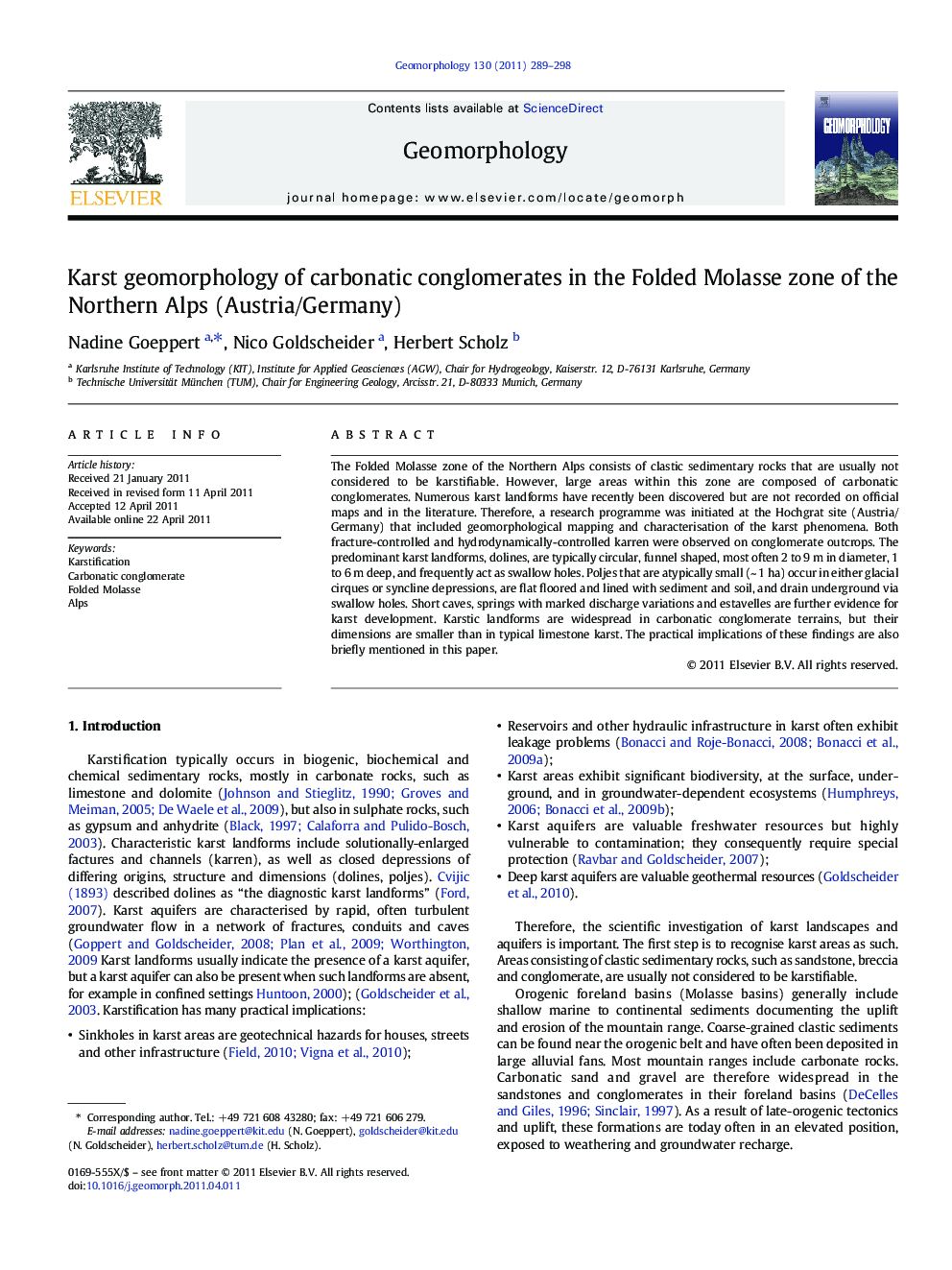| کد مقاله | کد نشریه | سال انتشار | مقاله انگلیسی | نسخه تمام متن |
|---|---|---|---|---|
| 6433012 | 1635500 | 2011 | 10 صفحه PDF | دانلود رایگان |

The Folded Molasse zone of the Northern Alps consists of clastic sedimentary rocks that are usually not considered to be karstifiable. However, large areas within this zone are composed of carbonatic conglomerates. Numerous karst landforms have recently been discovered but are not recorded on official maps and in the literature. Therefore, a research programme was initiated at the Hochgrat site (Austria/Germany) that included geomorphological mapping and characterisation of the karst phenomena. Both fracture-controlled and hydrodynamically-controlled karren were observed on conglomerate outcrops. The predominant karst landforms, dolines, are typically circular, funnel shaped, most often 2 to 9Â m in diameter, 1 to 6Â m deep, and frequently act as swallow holes. Poljes that are atypically small (~Â 1Â ha) occur in either glacial cirques or syncline depressions, are flat floored and lined with sediment and soil, and drain underground via swallow holes. Short caves, springs with marked discharge variations and estavelles are further evidence for karst development. Karstic landforms are widespread in carbonatic conglomerate terrains, but their dimensions are smaller than in typical limestone karst. The practical implications of these findings are also briefly mentioned in this paper.
Research Highlights⺠We studied carbonate conglomerates in the Folded Molasse zone of the Northern Alps. ⺠We found that these rocks are karstifiable, comparable to typical limestone karst. ⺠Karst landforms on conglomerate include karren, dolines, small poljes and caves. ⺠Swallow holes, springs and estavelles indicate an active conduit network. ⺠As a conclusion, carbonatic clastic sedimentary rocks can form karst aquifers.
Journal: Geomorphology - Volume 130, Issues 3â4, 15 July 2011, Pages 289-298